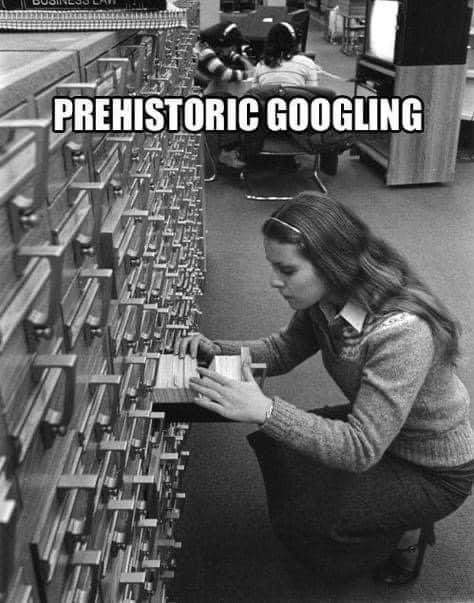In an era before the internet became our virtual encyclopedia, the quest for knowledge involved physical exploration through file cabinets, reference books, and other tangible resources. Join us as we step back in time to the prehistoric era of information retrieval, when file cabinets were the equivalent of search engines and uncovering knowledge required a hands-on approach.

The Hunt for Information
Long before the convenience of search engines, individuals seeking information had to navigate the labyrinth of file cabinets and libraries. Whether it was for research, historical data, or scholarly work, the journey to obtain facts involved meticulous searching and sifting through physical documents.
The Age of Card Catalogs
Card catalogs were the predecessors of digital search bars. These cabinets housed neatly arranged index cards, each representing a book or resource available in a library. To find a specific piece of information, one had to manually browse through the cards, jot down call numbers, and locate the corresponding book.
Library Dwellers and Resource Hunters
The process of prehistoric “Googling” involved dedicated visits to libraries and research centers. Scholars, students, and curious minds would spend hours poring over stacks of books, cross-referencing indexes, and taking diligent notes. These dedicated resource hunters became adept at navigating the physical information landscape.
Dewey Decimal System: The Original Algorithm
The Dewey Decimal System, a classification system for libraries, served as the original organizational algorithm. It categorized books by subject matter, assigning each a unique numerical code. Navigating through the stacks meant deciphering these codes and physically locating the relevant books.
The Triumph of Tangibility
While the process may seem antiquated by today’s standards, there was a certain charm in the tangible nature of the hunt for knowledge. Physical file cabinets, reference books, and the tactile act of flipping through pages created a sense of connection with the information being sought.
Evolution to the Digital Age
As technology advanced, the era of file cabinets gradually gave way to the digital age. Search engines, online databases, and digitized resources revolutionized how information is accessed. The convenience of online search eliminated the need for physical presence, enabling users to “Google” information from the comfort of their homes.
The era of prehistoric Googling, centered around file cabinets and library visits, represents a time when the quest for knowledge demanded patience, dedication, and a hands-on approach. The tactile experience of sifting through resources and discovering hidden gems created a unique connection with information. As we celebrate the evolution of information retrieval, let’s remember the pioneers of knowledge who explored the physical landscape of books, file cabinets, and card catalogs to uncover the treasures of human understanding.
As an Amazon Associate we earn from qualifying purchases through some links in our articles.




